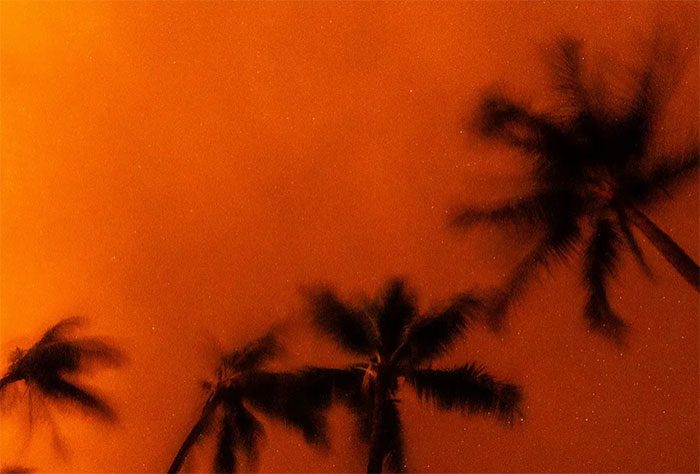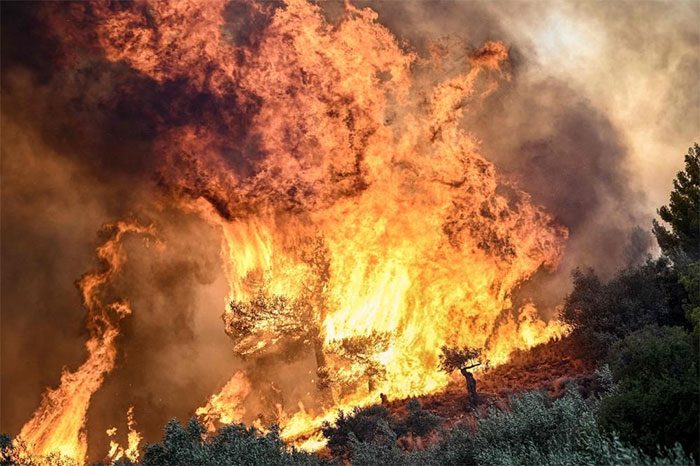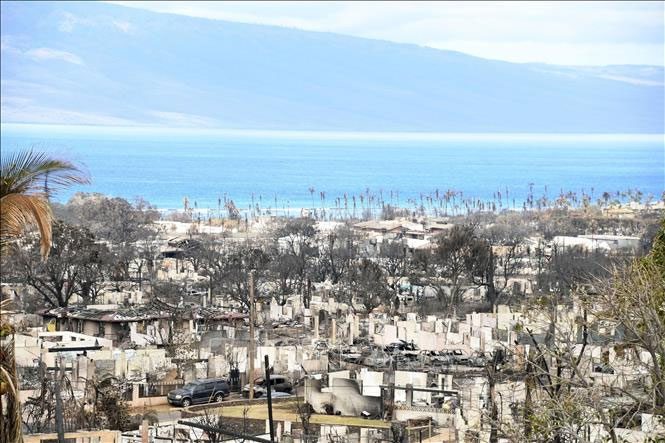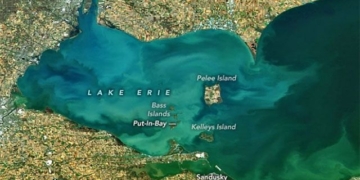The “hairdryer” winds have made some heatwaves and wildfires even more devastating this year. They could become a serious issue for climate change.
This strange and sometimes dangerous weather phenomenon is called “Föhn”, which in German means “hairdryer.” And true to its name, it is a hot, dry wind that can cause temperatures to soar.

Föhn winds have contributed to drought conditions. (Illustrative photo: BBC).
The BBC reported that this year, the “hairdryer” winds have occurred multiple times, including during heatwaves. One example is the Föhn wind associated with temperatures reaching 390C earlier this month in southeastern Taiwan (China). Some opinions suggest that the Föhn has contributed to the drought, “fanning the flames” of the devastating wildfire in Maui, Hawaii, which resulted in at least 106 fatalities.
The Föhn can even appear in frigid places like Antarctica. In these regions, the Föhn can contribute to the rapid collapse of ice shelves. It is believed that the Föhn has “pushed a significant amount of ice” off the coast of Greenland in 2018.
Liz Bentley, the Chief Executive of the Royal Meteorological Society in the UK, stated: “Typically, mountains or a range of hills are needed for the Föhn effect to occur.” She explained that humid air rises on one side of a mountain, and as it interacts with cooler air, the moisture condenses to form clouds or rain near or at the mountain’s summit. This releases energy into the atmosphere, causing air temperatures to rise.
Subsequently, the wind descends on the other side of the mountain, with the Sun contributing additional warmth. Air temperatures can increase by 100C or more. In 1972 in the United States, the Föhn phenomenon in Loma, Montana, raised local temperatures from -480C to 90C in just 24 hours. A similar phenomenon occurred in January 2020, when temperatures in Cut Bank, Montana, rose by 290C in just one hour.

Flames erupting at a wildfire near Prodromos, 100 km northeast of Athens, Greece, on August 21. Photo: AFP/TTXVN
A 30-year study in the southern Appalachian Mountains of North America found that Föhn winds can raise temperatures by at least 30C compared to nearby locations unaffected by the phenomenon.
The term Föhn originated from the Alpine region of Europe, but similar phenomena have been given various names in other parts of the world. In parts of the United States, such as the Rocky Mountains and Alaska, they are referred to as Chinook winds.
In Argentina, the Föhn effect is known as Zonda, while in South Africa, it is called Bergwind. In Valencia (Spain), it is referred to as Ponentà. In the UK, the Föhn appears in the Pennines and is locally called Helm wind. All of these can be classified as downslope windstorms. Meteorologist Jim Overland from the National Oceanic and Atmospheric Administration (NOAA) stated that this phenomenon is likely to worsen in the coming years, as climate change will lead to more prolonged, frequent, and intense heatwaves.

The aftermath of the wildfire disaster in Lahaina, Maui, Hawaii, USA, on August 16. (Photo: Kyodo/TTXVN).
On August 8, a horrific wildfire, described by Hawaii Governor Josh Green as a “firestorm,” swept through the famous coastal town of Lahaina in Maui. The combination of multiple factors contributed to the fire’s outbreak. According to some experts, the Föhn effect may also be part of the cause.
Craig Clements, director of the Interdisciplinary Wildfire Research Center at San José State University in California, noted that the Föhn winds likely played a role in Hawaii. However, he also pointed out that the Lahaina fire was largely driven by strong winds across the region at that time.
According to Clements, Föhn winds often occur alongside severe wildfires. He cited examples from California (USA) and Greece. Clements emphasized a point that people may not realize: it can dry out grasses. This is dangerous because fires can spread rapidly over dry grass.
The Föhn can have a significant impact on weather and wildfires in certain areas, making it crucial to be aware of the risks they pose. Bentley stated: “There is nothing you can do to stop the wind” and it is vital to prepare, especially if there is a risk of dangerously high temperatures or wildfires.


















































